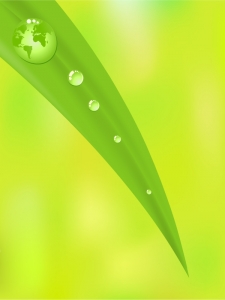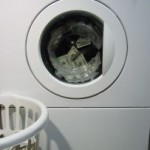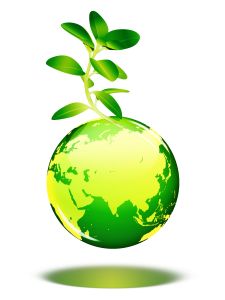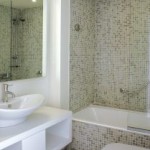 Thinking about new ways in which you can live a more eco friendly life? Using eco-friendly products around the home can have a great positive impact on the environment. Many non-eco cleaning products contain enzymes, bleaches, brighteners and perfumes.
Thinking about new ways in which you can live a more eco friendly life? Using eco-friendly products around the home can have a great positive impact on the environment. Many non-eco cleaning products contain enzymes, bleaches, brighteners and perfumes.
Here are some tips for you to green clean your home (White distilled vinegar is a popular household cleanser, effective for killing most mold, bacteria, and germs, due to its level of acidity):
– Clean the shelves and walls of the refrigerator with a half-and-half solution of water and white distilled vinegar.
– To shine chrome sink fixtures that have a lime buildup, use a paste made of 2 tablespoons salt and 1 teaspoon white distilled vinegar.
– Clean the microwave by mixing 1/2 cup white distilled vinegar and 1/2 cup water in a microwave-safe bowl. Bring it to a rolling boil inside the microwave. Baked-on food will be loosened, and odors will disappear. Wipe clean.
– Make your own scouring cleanser by combining 1/4 cup baking soda with 1 tablespoon liquid detergent. Add just enough white distilled vinegar to give it a thick but creamy texture.
– Cut the grime on the top of the refrigerator with a paper towel or cloth and full-strength white distilled vinegar.
– Clean counter tops and make them smell sweet again with a cloth soaked in undiluted white distilled vinegar.
– Deodorize the garbage disposal by pouring in 1/2 cup baking soda and 1/2 cup hot white distilled vinegar. Let sit for 5 minutes then run hot water down the disposal.
– Get rid of lime deposits in a tea kettle by adding 1/2 cup white distilled vinegar to the water and letting it sit overnight. If more drastic action is needed, boil full-strength white distilled vinegar in the kettle a few minutes, let cool and rinse with plain water.
– For stained and smelly plastic food containers, wipe them with a cloth dampened with white distilled vinegar.
– Spray shower doors with full-strength white distilled vinegar after you’ve squeegeed the glass, or before you step in and turn on the water. It will help release the hard water deposits so they don’t remain on the glass.
– Mix up an inexpensive tile cleaner by adding 1/2 cup baking soda, 1 cup white distilled vinegar, and 1 cup ammonia to a gallon of warm water.
– To clean a scummy showerhead, pour 1/2 cup baking soda and 1 cup white distilled vinegar into a sandwich bag and tie it around the showerhead. Let this set for an hour after the bubbling has stopped. Remove the bag and then turn on the water.
– To make the toilet bowl sparkle, pour in a cup or more of diluted white distilled vinegar and let it sit several hours or overnight. Scrub well with the toilet brush and flush.
– For an economical and environmentally friendly floor cleaner, mix a solution of 3 drops dishwashing liquid to 1/3 part white distilled vinegar, 1/3 part alcohol, and 1/3 part water. Spray sparingly and mop for a fast clean-up.
 One of the biggest energy eaters at home is the washing machine and although it is not possible to live without it, there are ways to put it on “energy diet”.
One of the biggest energy eaters at home is the washing machine and although it is not possible to live without it, there are ways to put it on “energy diet”.
 There are various greener and safer alternatives to bleach: vinegar, lemon juice, hydrogen peroxide, oxygen, borax, washing soda, sodium hydrosulfite (salt & water) to name a few.
There are various greener and safer alternatives to bleach: vinegar, lemon juice, hydrogen peroxide, oxygen, borax, washing soda, sodium hydrosulfite (salt & water) to name a few. We use our bathrooms everyday, therefore it is one of the most favourite places for bacteria to spread. Cleaning your bathroom should not be a hard work if done properly and regularly and you do not even need to invest in expensive products. You can do wonders by using the contents of your kitchen cupboard.
We use our bathrooms everyday, therefore it is one of the most favourite places for bacteria to spread. Cleaning your bathroom should not be a hard work if done properly and regularly and you do not even need to invest in expensive products. You can do wonders by using the contents of your kitchen cupboard. Thinking about new ways in which you can live a more eco friendly life? Using eco-friendly products around the home can have a great positive impact on the environment. Many non-eco cleaning products contain enzymes, bleaches, brighteners and perfumes.
Thinking about new ways in which you can live a more eco friendly life? Using eco-friendly products around the home can have a great positive impact on the environment. Many non-eco cleaning products contain enzymes, bleaches, brighteners and perfumes.